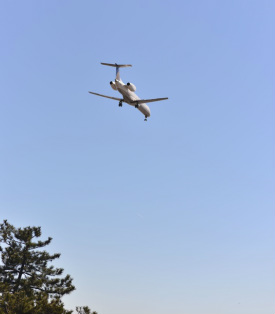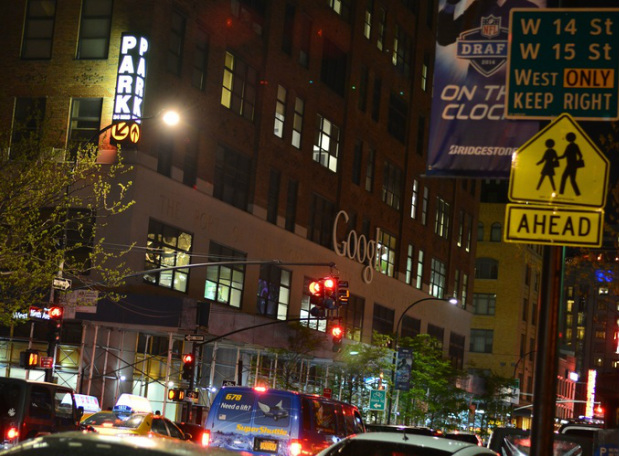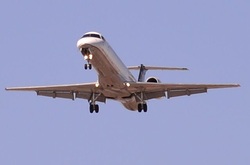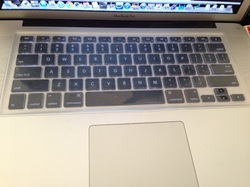 Airlines offering entertainment via mobile devices Airlines offering entertainment via mobile devices Are we there yet? If you are flying on Delta, you can now check on your iPhone or iPad to see where your flight is. And that is not all that the app does. You no longer need to pay to see a movie or TV show on your flight. The app allows you to select your favorites and watch them at no charge. (There are additional charges for select premium content.) Delta is not alone in this endeavor. United this past Spring updated its apps to offer passengers access to its in-flight entertainment. Hawaiian Airlines has been offering passengers iPad Mini's for about a year, although at a fee for most. Australia-based Qantas has been providing passengers with access to customized iPads. It makes sense that this trend will increase in the near future. Undoubtedly, the vast majority of passengers have a smartphone or tablet with them as they travel. There is little reason to pay a fee for in-flight entertainment options. From a competitive standpoint, it seems intuitive that integrating the airline apps with the passengers' devices will make for a more pleasant experience and, ideally, result in more return customers. There is probably a cost, perhaps significant, to make the switch from the "old school" entertainment options. It seems, however, that Delta, United, Hawaiian, and Qantas have already made the judgment that passengers prefer using their mobile devices.
0 Comments
 NYC held parade in 1969 for Apollo 11 astronauts, just a few miles from where Google offices are now located. You can Google it! NYC held parade in 1969 for Apollo 11 astronauts, just a few miles from where Google offices are now located. You can Google it! Growing up in Brooklyn in July 1969, I remember the days when our family gathered around the single black-and-white television to watch the landing on the moon. In this case, it was probably downstairs with my grandparents, because my parents were on their way to The City (aka, Manhattan) for the birth of my youngest brother. That was a pretty exciting year for my family and for the Big Apple. One of my older brother's Bar Mitzvah was on the weekend the Jets won their one and only Super Bowl, against the Baltimore Colts, led by Joe Namath. The Mets would follow in October with their first World Series win, versus the Baltimore Orioles, with a pitching staff that included Tom Seaver and Nolan Ryan. Flash forward to 2014. You can get a ton of information about the moon landing and future space exploration on the internet. The web also is a treasure chest for sports statistics enthusiasts. Google works wonders for researching both. Most households now have two or more color televisions, and in many cases smartphones and tablets allow viewers to access programming on their mobile devices as well. This all leads to the question about how older seniors are adapting to the new technological choices. According to the Pew Research Center, seniors have tended to embrace the technology up until around age 75, then usage tails off due to health and other factors. Interestingly, tablets and e-readers are the devices of choice among seniors — perhaps because the screens are more reader-friendly and larger than on smartphones. Here are some noteworthy items from the Pew study:
Interestingly, when Apple last week announced new upcoming features for its operating systems, the ability to answer iPhone calls on a Mac or an iPad was mentioned. It will be interesting to see if this increased user-friendliness will resonate with seniors in new ways. 6/28/2013 0 Comments Pilot Use of iPads Soaring iPad use by airline pilots continues to take off. iPad use by airline pilots continues to take off. For a device that has been on the market for only three years, it is nothing short of phenomenal how quickly the iPad has taken hold. The Los Angeles public school system just this month announced that it was purchasing over 30,000 iPads for its students. The Mayo Clinic has over 15,000 iPhones and iPads on its network. Hyatt Hotels is rolling out thousands of iPads to its employees. General Electric, founded by Thomas Edison, is connecting thousands of employees with in-house apps. For years, commercial airline pilots have carried flight bags with reams of paper - estimated at 45 pounds - on board. At 1.5 pounds, the iPad is saving an incredible amount of fuel, not to mention trees. United Airlines estimates the annual savings at 16 million sheets of paper and 326,000 gallons of fuel, not to mention much faster access to information. American Airlines says it will save 400,000 gallons per year. JetBlue is expanding a pilot program (pun intended) to provide all 2,500 of its pilots with iPads. Alaska Airlines is requiring its new pilots to go the paperless route - in fact, noting that lugging around and digging through heavy flight bags at times would lead to pilot injuries. American Airlines estimates that iPads will eliminate the need for 3,000 pages of paper per pilot. Many airline passengers are waiting to see how the FAA's review of on-board passenger use of electronics will fare. Some suggest that many of the current restrictions are archaic, while others prefer to err on the side of caution. It's amazing to realize that just over a decade ago, the iPod was primarily a music player. Today, you might see anyone from infants to pilots using iPads on aircraft.  Following up the Black Friday note below, the results of Cyber Monday are in and retailers would appear to be quite pleased with the results. According to real-time data collected for the Cyber Monday Report 2012: IBM Digital Analytics Benchmark, online sales skyrocketed 30.3% over the same day in 2011. Some 18% of consumers used a mobile device to view a retailer's website, and mobile sales represented about 13% of all sales. While these numbers in and of themselves might not seem high, both figures are up very significantly over 2011. At 11:25 a.m. (ET) on Cyber Monday, sales reached their peak for the day, but there were strong sales as well after commuting hours. According to IBM, consumers used a "multiscreen" shopping technique, simultaneously finding the best bargains in store, online, and/or on a mobile device. As with Black Friday, iOS devices (iPhone and iPad) led the way for mobile shoppers. The message here would appear to be that any consumer-facing company - whether in retail, financial services, manufacturing, or some other area - should focus on giving the customers what they want in the format they prefer. Paying attention to consumer preferences appears to pay off with increased sales. With many more consumers looking to purchase smartphones and tablets for the foreseeable future, it is important for businesses to take note of this trend. 11/26/2012 0 Comments Not a Cyber Monday Sale HAPPY THANKSGIVING!! If you check your Inbox today, it probably seems that every other e-mail is from a retailer advertising its Cyber Monday sale items. This followed last week's frenzy for Black Friday. There was even a new promotion added this year - Small Business Saturday. If all of these events help to get our economy back on track, that should be a good thing, although it shouldn't be at the cost of near-riots as people line up to get into stores in the middle of the night. Why do we even have Cyber Monday? The answer to that probably lies in the ways most people are now connected. Although there has been a decline in personal computer usage, mobile devices - particularly smartphones and tablets - continue to reach new heights. You can shop in the comfort of your own home at any time of the day or night. You can shop while commuting on a train (if you have a decent signal). You don't have to deal with traffic and hazardous weather conditions. It is probably safer to securely transmit your credit card information than to have someone standing behind you in a crowded store. The impact of Cyber Monday should become apparent in the next day or two as retailers report on their sales results. Just looking at Black Friday, as well as the stores that opened on Thanksgiving Day itself, we see the tremendous impact mobile shopping is having already. According to Black Friday Report 2012: IBM Digital Analytics Benchmark, online sales on Thanksgiving Day were up 17.4% over 2011, while Black Friday sales were up 20.7%. Use of a mobile device to view a retailer's website jumped from 14.3% in 2011 to 24% in 2012. Mobile sales increased from 9.8% to 16%. The iPad was the preferred mobile device for online shopping (10%), followed by the iPhone (8.7%) and Android (5.5%). For those using tablets, the iPad accounted for nearly 90% of online shopping traffic. Without a doubt, iPads (including the new iPad Mini), iPhones, Kindle Fires, and Nooks, among others, will be popular gifts this holiday season. It would seem highly probable that these trends will continue to gain momentum for the foreseeable future. |
Blog Author - Ken FelsherWith over 25 years of writing, editing, and research experience. I enjoy sharing with my readers my love of working with content on a variety of subjects. CategoriesAll 9-11 Airline Apollo 11 Apple Baseball Black Friday Boston Cable Cambridge Ceo Cooperstown Cyber Monday Cyber-Monday Delta Derek Football Freedom Tower Hall Of Fame Harvard Hawaiian HBO Hulu Hurricane Sandy Ipad IPhone IWatch Jeter Marissa Mayer Megatrend MIT Mobile Netflix New-jersey One World Trade Center Personal Computer Qantas Schlep Factor September 11 Smartphone Social Media Tablet Twin Towers United World Trade Center Yahoo Yankees Archives
January 2016
|

 RSS Feed
RSS Feed